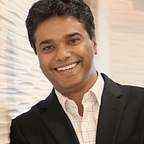Reducing Wealth Inequality’s Impact on Your Bottom Line: A Market-Based Approach
Wealth is increasingly concentrated in households that are averse to spending it, and this trend is likely to increase as wealth inequality grows worldwide. Without a countervailing force, inequality threatens to choke the economic engine that created it.
A key inequality driver is technology: a winner-take-all market is emerging around massive data stores (Cambridge Analytica claimed to have 5,000 data points on each person in a database containing millions of voters), along with Artificial Intelligence to predict and influence our behavior based on this knowledge. Companies that leverage this technology are widening the inequality gap, with the potential to become victims of their own success.
We propose a solution, based on existing proven models, that incorporates today’s best technologies to generate the information needed to enable self-regulation via consumer choice. Similar to the use of “green” packaging or cruelty-free cosmetic labeling, we propose a scheme to identify companies who, through their business practices, reduce wealth inequality, along with consumer education initiatives that motivate purchase from wealth inequality-reducing companies.
Here’s how it works, as shown below.
The Wealth Equality Index (WEI, pronounced “We”) Foundation establishes a Wealth Equality Index that indicates the degree to which a company contributes to wealth equality. The WEI index is very simple: green is best and red is worst, with yellow representing an intermediate state. The WEI index represents the degree to which a company’s wealth is concentrated. Note that this is not the same as the products that the company offers or sells, nor does it reflect benefit to the company’s employees.
When the WEI system is in place, consumers will understand that, by purchasing from WEI-green companies, they can help to reduce wealth inequality worldwide, which may also directly impact certain consumers (as described in more detail below). The ability to attract the “WEI green” purchasing segment will, as with fair trade coffee, organic food, and other labeling schemes, attract a powerful new market segment.
So what decisions does a company make that allow it to be ranked as WEI green? We propose that it participates in the WEI ecosystem, as shown below.
As shown here (1) the WEI foundation accredits for the WEI index and performs certain consumer education functions to encourage its use. In addition, at present, (2) Sovereign Wealth funds worldwide. pay a yearly dividend to residents of certain geographies, in recognition of community ownership of a resource. For instance, the Alaska Permanent Fund pays a yearly dividend to every state resident, reflecting Alaska’s oil resources. There are similar funds in many other regions, such as Texas and Norway. These funds share in common the fact that they distribute wealth based on only residency, not based on an investment portfolio. This wealth stimulates spending amongst the bottom 80% of the market, thereby increasing wealth equality.
Catalyzing the WEI ecosystem are then (3) WEI-green VC funds, which consolidate investments from sovereign funds, and for this reason, can be accredited as WEI green or yellow (4). As they do now, these VCs (5) invest in companies. These companies are then accredited (6) to carry the WEI green or yellow label, which attracts consumers (7).
Once this mechanism is in place, it grows nonlinearly, as shown below:
This is a complex adaptive system, with multiple players who will be constantly adjusting to each other’s behavior. For this reason, mapping and tracking the mechanism using advanced technologies like artificial intelligence and decision intelligence can be used to optimize its behavior.
Now we have a market-drive WEI ecosystem — with a mechanism, a yardstick, and a referee — that rebalances the flow of wealth, including that wealth generated by data and AI. And, because we are redistributing wealth (not income) the WEI virtuous cycle will continue to work even if AI and other forms of automation eliminate jobs.
If you would like to learn more about the WEI Initiative and Foundation, please write to us, at info@wealthequalityindex.org.
